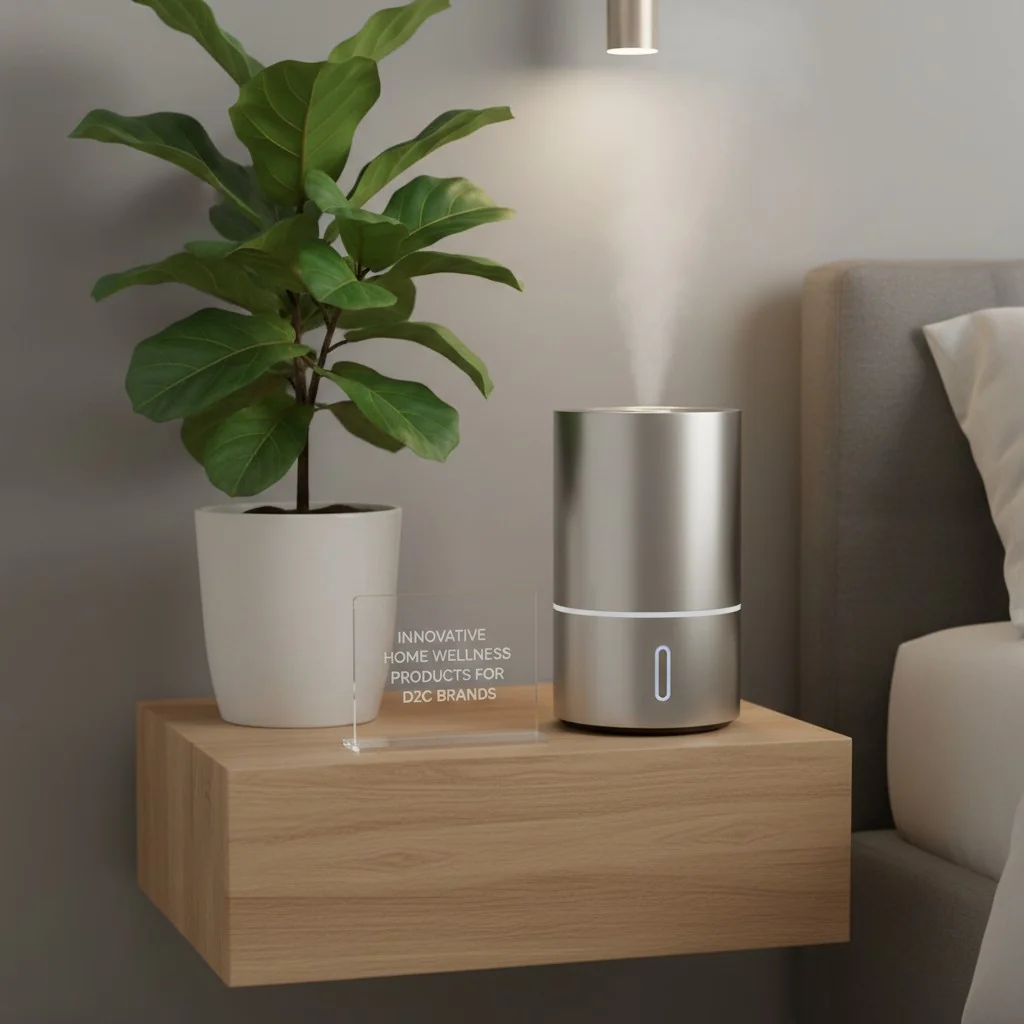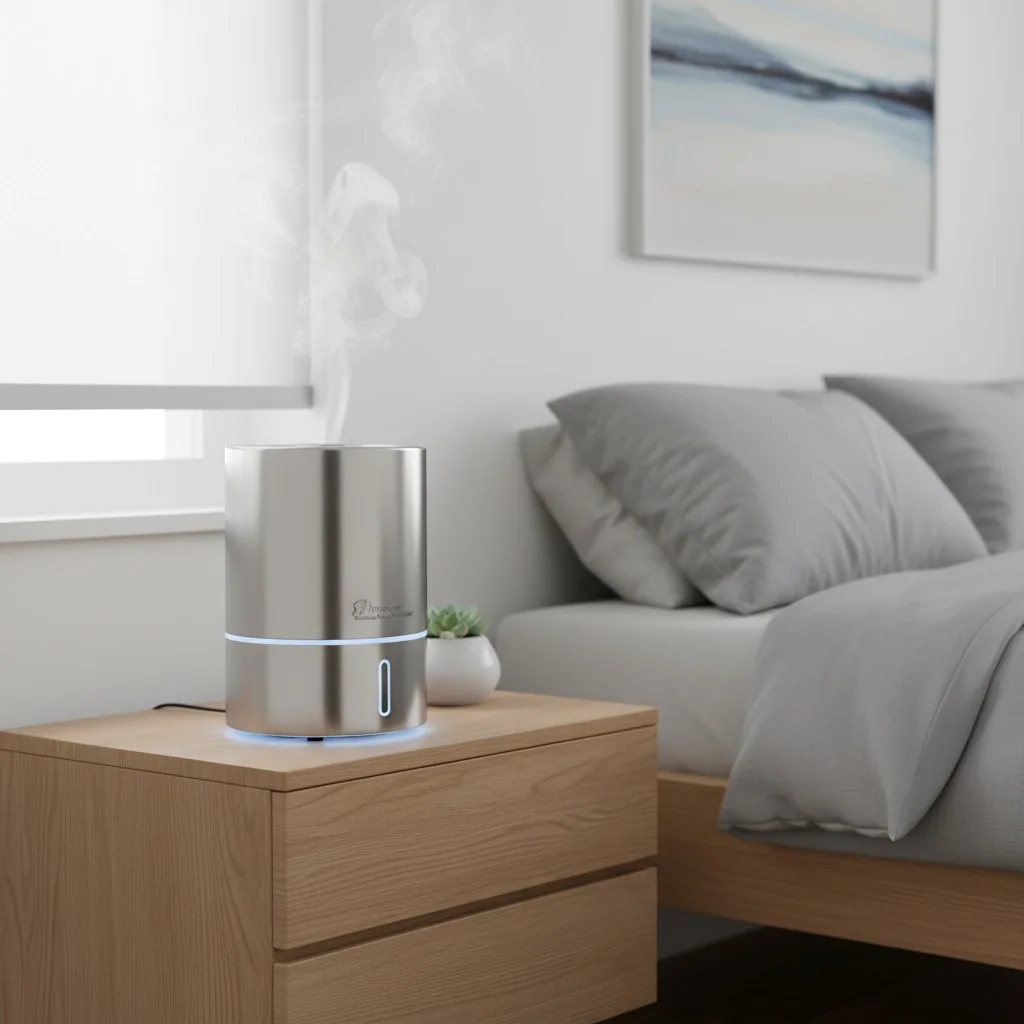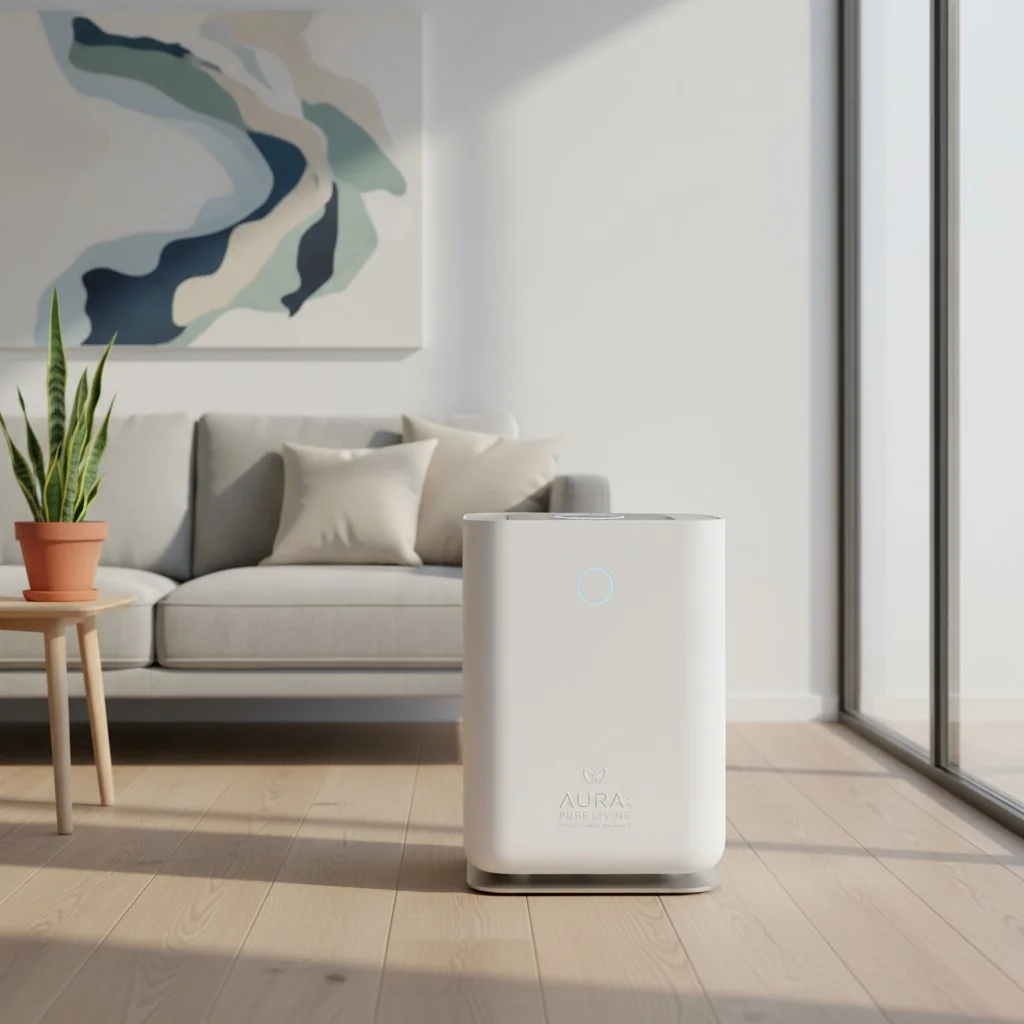Un macchina per la disinfezione dell'aria è ciò di cui probabilmente avete bisogno se siete proprietari di un ristorante, di un'azienda o di un'attività sanitaria. In che modo uno sterilizzatore d'aria vi protegge da Covid-19 e promuove un'aria interna più sicura? C'è molto di più di quello che sembra, quindi continuate a leggere!
Gli esperti affermano che la Covid-19 si diffonde principalmente da persona a persona. Ma può avvenire anche attraverso la trasmissione per via aerea?
La risposta è sì. Le prove sempre più evidenti riguardano il fatto che il virus può sopravvivere nell'aria per un periodo che può arrivare a 3 ore. Se una persona lo inala, può entrare nei polmoni e infettarsi.
Inoltre, sappiamo che le goccioline infette e gli aerosol prodotti da tosse, conversazioni e starnuti possono contribuire alla diffusione della malattia. Gli aerosol possono trasportare il virus dall'aria al naso o alla bocca.
In che modo la macchina per la disinfezione dell'aria è utile in caso di pandemia?
Mentre gli esperti sono divisi anche sul modo in cui si diffonde realmente nell'aria, sappiamo che la pulizia dell'aria interna è molto importante per proteggere le persone dalla trasmissione per via aerea.
Inoltre, la SARS-CoV-2 può diffondersi rapidamente, causando un forte impatto sui luoghi pubblici e sulle strutture mediche.
Pertanto, è pratico ottenere un Sistema di disinfezione dell'aria a raggi UV o macchina per la disinfezione dell'aria per purificare l'aria infetta prima che arrivi alle persone. Questi depuratori d'aria specializzati, se usati in modo appropriato, possono aiutare a proteggere i clienti e la famiglia dalle infezioni che possono verificarsi in ambienti chiusi.
La FDA ritiene inoltre che i depuratori d'aria a raggi UV possano contribuire al controllo delle infezioni e alla mitigazione della comunità per la salute e la sicurezza pubblica.
Che cos'è una macchina intelligente per la disinfezione dell'aria?
Una macchina per la disinfezione dell'aria è dotata di diverse caratteristiche che consentono di intrappolare gli allergeni presenti nell'aria e di disinfettarla. Per disinfezione dell'aria si intende l'eliminazione dei microrganismi patogeni che causano malattie e irritazioni polmonari alle persone.
Alcune macchine specializzate per la disinfezione dell'aria, come ad esempio una macchina sterilizzatrice ad aria, può anche uccidere contaminanti o batteri sporadici.
Altri nomi associati o che hanno lo stesso scopo delle macchine per la disinfezione dell'aria sono:
- Macchina UV per la sanificazione dell'aria
- Purificatore d'aria UV
- Purificatore d'aria a ioni negativi
- Purificatore d'aria di grado medico
- Macchina per l'aria fresca
- Purificatore d'aria con generatore di ozono
- Depuratore d'aria con filtro HEPA
- E molti altri
Come funziona una macchina per la disinfezione dell'aria?
Una macchina per la disinfezione dell'aria funziona intrappolando 99,97% virus e sporcizia dall'aria inquinata e utilizzando una luce UV-C a breve lunghezza d'onda (luce ultravioletta) per uccidere gli agenti patogeni. La luce ultravioletta, che passa attraverso il filtro HEPA H13, distrugge i microrganismi interrompendo le loro funzioni cellulari. Di conseguenza, l'aria esce purificata e respirabile.
Componenti di una macchina per la disinfezione dell'aria interna
Disinfezione UV dell'aria La macchina per la disinfezione dell'aria comprende una serie di filtri e componenti. Nello specifico, gli sterilizzatori d'aria hanno diversi filtri speciali rispetto a un purificatore d'aria portatile.

1. Prefiltro
Questo filtro è la "prima linea" della macchina per la disinfezione dell'aria e cattura le particelle più grandi, in modo che la maggior parte di esse non finisca nel filtro secondario. Può essere monouso o un componente filtrante lavabile. Ne sono un esempio le particelle di grandi dimensioni come peli di animali, polvere e polline.
2. Filtro al plasma
Il Filtro al plasma è un filtro ad alte prestazioni utilizzato negli ospedali e nelle strutture sanitarie per catturare gli agenti patogeni e purificare l'aria.
3. Filtro a carbone attivo
Il filtro a carboni attivi è uno strato assorbente che cattura cattivi odori, smog, composti organici volatili (VOC), sostanze chimiche e fumo. Può anche rimuovere le sostanze chimiche presenti nell'aria che causano problemi di salute, come la formaldeide, il toluene e l'acetone.
4. Filtro HEPA di grado medico H13
Il filtro HEPA H13 è in grado di bloccare il 99,95% di particelle di dimensione massima di penetrazione (MPPS), ideale per gli ambienti sanitari. Questo filtro è in grado di trattenere 0,21 micron di virus e batteri ed è progettato per essere molto più efficace dell'HEPA standard.
5. Filtro fotocatalizzatore
Il filtro fotocatalizzatore è progettato con un'apatite di titanio in grado di distruggere i contaminanti organici e la materia organica. Inoltre, il filtro fotocatalizzatore PCO è efficace contro la distruzione del Coronavirus catturato in un purificatore d'aria.
6. Lampada UVC
Un filtro HEPA abbinato a una lampada UVC può virtualmente intrappolare e distruggere il Coronavirus e altri tipi di batteri e virus presenti nell'aria. La lampada UVC LED è efficace nell'inibire le attività microbiche di questi virus e li elimina completamente dall'aria.
7. Ioni negativi
Gli ioni negativi vengono rilasciati nell'aria per pulirla. Le macchine per la disinfezione dell'aria a ioni negativi vengono spesso confuse con i generatori di ozono per la disinfezione dell'aria. Questi ultimi emettono ozono, dannoso per la salute, mentre i depuratori a ioni negativi si limitano a caricare le particelle per attrazione elettrostatica. Le particelle vengono quindi attratte e cadono sulle piastre conduttrici all'interno del depuratore d'aria.
Dove utilizzare le macchine per la disinfezione dell'aria
- Protezione aggiuntiva dei lavoratori oltre ai DPI
- Protezione dell'esposizione di clienti e committenti
- Protezione per operatori sanitari e pazienti
- Protezione da fumi, esalazioni e sostanze chimiche dell'industria
- Protezione dalle deiezioni eccessive degli animali domestici
Quali sono le caratteristiche da tenere in considerazione?
Quando si sceglie una macchina per la sanificazione dell'aria, è bene cercare anche alcune di queste caratteristiche:
- Utilizzo dell'energia
- Livello di rumore
- Garanzia
- Reputazione del produttore
- Etichettatura
Consumo di energia
Poiché gli sterilizzatori ad aria sono destinati a funzionare 24 ore su 24, 7 giorni su 7, devono consumare meno energia per ridurre al minimo l'effetto sulle bollette elettriche. La maggior parte Sterilizzatori d'aria UV domestici sono classificati da 40 a 200 watt. Inoltre, cercate una macchina che abbia una classificazione Energy Star. Questo indica l'efficienza energetica della macchina rispetto ad altri modelli delle stesse dimensioni.
È possibile risparmiare ulteriormente facendo funzionare le macchine a velocità ridotta quando si esce di casa. Per le grandi strutture, è possibile cercare macchine intelligenti per la disinfezione dell'aria che regolano automaticamente la velocità in base alla qualità dell'aria filtrata.
Livello di rumore (decibel)
Per quanto riguarda la praticità, è necessario conoscere il livello di rumorosità dello sterilizzatore ad aria. La maggior parte degli sterilizzatori ad aria sono pubblicizzati per funzionare in modo silenzioso, ma verificate il livello di rumorosità quando aumentate la velocità della ventola, poiché anche il livello sonoro aumenta.
Un tipico sterilizzatore ad aria ha fino a 5 modalità di ventilazione (silenziosa, bassa, media, alta, turbo)che può essere regolata automaticamente o manualmente. Una volta avviato in modalità automatica, il ventilatore si regola da solo in base alla qualità dell'aria.
Il livello di rumorosità di uno sterilizzatore ad aria si avvicina al ronzio di un frigorifero, che si aggira intorno a Da 20 a 60 decibel. Se il rumore è ancora fastidioso, scegliete un purificatore d'aria che abbia l'opzione "Modalità silenziosa" o "Modalità notturna". Inoltre, invece di utilizzare depuratori con filtri meccanici, è possibile scegliere purificatori d'aria a ioni negativiche non utilizzano ventole e quindi funzionano in modo più silenzioso.
Per evitare che il vostro purificatore d'aria funzioni sempre in modo rumoroso, assicuratevi di scegliere il purificatore d'aria dimensionato correttamente per la vostra stanza. Se le dimensioni sono inadeguate, è possibile che la macchina funzioni più spesso in modalità Turbo. Se il rumore è un problema molto sentito, scegliete una macchina per la sterilizzazione dell'aria di dimensioni corrette o addirittura con una capacità superiore a quella richiesta dal vostro spazio.
Garanzia
Prima di procedere all'acquisto, è bene informarsi sulla garanzia. È possibile parlare con i rappresentanti delle vendite e del servizio clienti per ottenere spiegazioni approfondite sulla garanzia della macchina e dei suoi componenti. Questo per assicurarsi che, in caso di malfunzionamenti della macchina, la sostituzione, la riparazione o il rimborso non siano un problema.
Produttore
Ci sono molti marche che sono purificatori d'aria di livello medico, che godono di buona reputazione sul mercato. Eccone alcuni, ma non si limitano a questo elenco:
- IQAir
- Aria di coniglio
- Blueair
- GermGuardian
- Levoit
- HisoAir
- ecc.
Si tratta di alcune delle migliori opzioni presenti sul mercato in questo momento. Queste aziende operano nel settore da molti anni. Inoltre, non solo l'azienda, ma anche voi dovreste dare un'occhiata ai modelli per assicurarvi che siano adatti alla vostra casa.
Anche gli OEM/ODM possono essere una fonte affidabile di macchine, ma è sufficiente assicurarsi che questi produttori presentino i rapporti di prova HEPA e i certificati di verifica.
Se si desidera acquistare da un produttore, è necessario contattare il produttore stesso. purificatore d'aria produttore in Cina. È possibile richiedere i loro rapporti di prova, la conformità del prodotto e persino foto e video del prodotto in funzione e della loro fabbrica.
Etichettatura
L'FDA raccomanda che i depuratori d'aria includano un'etichettatura che aiuti i clienti a comprendere l'uso della macchina, soprattutto durante la pandemia di Coronavirus. Si raccomanda di descrivere chiaramente le prestazioni del dispositivo, in particolare l'area massima di funzionamento e la durata operativa.
Inoltre, l'FDA raccomanda anche una chiara avvertenza sui rischi e i pericoli, come l'esposizione ai raggi UV per gli sterilizzatori UV ad aria. Inoltre, dovrebbe essere disponibile per i clienti una procedura completa in termini di funzionamento.
Conclusione
Se utilizzate correttamente, le macchine per la disinfezione dell'aria possono impedire che i contaminanti presenti nell'aria popolino la casa, l'azienda o l'ospedale. Si noti che i depuratori d'aria da soli non sono sufficienti a proteggere le persone dalla Covid-19. Se si utilizzano le macchine per la disinfezione dell'aria con un'adeguata distanza, un lavaggio delle mani e una disinfezione appropriati, si può garantire una maggiore protezione per tutti.
Se siete alla ricerca di macchine per la disinfezione dell'aria di altissimo livello, HisoAir vi copre. Produciamo diversi tipi di sistemi di filtrazione a luce ultravioletta per la sterilizzazione dell'aria e tecnologie per garantire che la vostra struttura sia protetta da Covid-19.







